And sadly …
“The supercar that runs using ‘saltwater’ is likely BS.”
Read Lana Verdin’s comment down below.
– Electric Car Powered by Salt Water: 920 hp, 373 Miles/Tank (Aetherforce):
It’s finally here folks and it is LEGIT.
Tesla eat your heart out, the Germans have created an electrical car powered by salt water. It has four electric engines and is FAST with some pretty sweet fuel economy for a sports car. Leave the Bugatti at home and stop by the beach to refuel.
============================================
The recent announcement that the Quant e-Sportlimousine, which is a salt water powered car, has been certified for use on European roads is a big sign that the Oil Cartels are losing the energy war.
Since the early 1900s, the Oil Cartels, which are controlled by the Controllers, have been harassing and silencing alternative energy inventors who pose a threat to the Oil Cartels. One of the greatest alternative energy inventors that they silenced was Nikola Tesla.
Unlike traditional cars that run on gasoline, the Quant e-Sportlimousine runs on an electrolyte flow cell power system made by NanoFlowcell that has the ability to generate an astonishing 920 horsepower (680 kW).
This salt water powered car can go from 0-62 mph (100 km/h) in 2.8 seconds and has a top speed of 217.5 mph (350 km/h). The Quant e-Sportlimousine is built by the German company Quant.
Electrolyte flow cell technology has been around for decades, but it wasn’t until recently that certain car manufacturers were given the permission to start building cars that run on electrolyte flow cell technology.
This type of alternative energy technology will eventually make gasoline powered cars obsolete, because using electrolyte flow cell technology to power cars is a lot more efficient and much cleaner than using gasoline.
As described by The Mind Unleashed:
“The car is powered by the electrolyte flow cell power system, which is a part of the NanoFlowcell technology. The system works in a similar way to a hydrogen fuel cell, except for the fact that salt water is used for storing power.
“In particular, two liquids with metallic salts, which act as the electrolyte, are combined in such a way that the electrochemical reaction takes place. After that, electric motors use this reaction to generate electricity, which is then stored and distributed by super capacitors.
“The efficiency of this system reaches 80%, since the car has almost no moving parts in it, and the produced waste heat is insignificant in comparison with cars powered by lithium-ion batteries.”
Alternative energy technologies, such as the electrolyte flow cell system, will become more mainstream as the new paradigm emerges. These types of alternative energy technologies will help solve our “energy crisis” and usher a new age in which we can live without worrying about not having access to cheap and clean energy.
QUANT e-Sportlimousine with nanoFLOWCELL® drive
General Electric has been working on flow battery technology for years and announced in August 2013 that it aimed to power a car with a water-based battery for 240 miles, though there is no word on whether much progress has been made there. Flow cell batteries have the potential to power cars three times as far and for one-fourth the cost of lithium-ion batteries (the sort that industry darling Tesla Motors is betting big on), according to GE. Flow cell batteries are said to be safer, lighter, and easier to recharge than lithium-ion ones, as well.
Newsclip: World Premiere of the new QUANT e-Sportlimousine
We now have a clearer picture of Nunzio La Vecchia’s energy and supercar ventures than we did when we covered the Quant teaser. La Vecchia began researching alternative energy technologies in 1991, forming NLV Solar in Switzerland seven years later. He turned his attention to auto design in 2003, partnering with Koenigsegg on the original Quant in 2009 and releasing an updated version on his own a year later. Nanoflowcell emphasizes that the cooperation with Koenigsegg ended in 2009, and the 2014 Quant represents an entirely new vehicle concept.
“Following the 2010 Geneva Motor Show, it was decided to pursue a completely new concept, both optically and technically,” Nanoflowcell explains. “Every element of the Quant e-Sportlimousine has been developed from the ground up over the last four years: new powertrain, complete redesign, and most importantly, every aspect of the new prototypes are designed with homologation requirements in mind.”
The beating heart of the new Quant is its Nanoflowcell power storage, a very specific formulation of flow battery. Flow battery power for vehicle use is being researched elsewhere, as well, but the Quant becomes what Nanoflowcell qualifies as the first actual vehicle powered by it.
Nanoflowcell explains that its technology boasts five to six times the storage capacity of other flow cell designs or lithium-ion batteries, making it primed for vehicular use. It credits that superior energy density to “an extremely high concentration of ionic charge carriers in the cell system’s electrolyte” and translates it into a 249- to 373-mile (400- to 600-km) driving range estimate.
Understandably, Nanoflowcell isn’t divulging the full recipe for its flow battery or electrolytes. In its introductory video, it describes the solutions simply as salt water. La Vecchia confirmed that the full truth is a bit more complex, as the electrolytes contain a mix of metal salts and other ingredients.
The high- and low-charge solutions are stored in separate 200-liter tanks in the rear of the Quant, being pumped forward through a central cell, separated from each other by a thin membrane. This creates electricity, which flows into two supercapacitors, where it is stored and managed, released on acceleration to power the four three-phase wheel motors. Nanoflowcell says the flow technology operates with 80 percent internal efficiency.
In development for 14 years, the four-seated car measures roughly 5.25 metres in length and sports what its creators say is an entirely new kind of energy storage system, also called Nanoflowcell. The company claims that the automobile is capable of speeds of 350 kilometres per hour and acceleration of 0-100 kilometres per hour in just 2.8 seconds, and can travel distances of 600 kilometres with a full tank of a petrol made from a salt water solution.
An electrochemical reaction is created by combining two liquids with metallic salts acting as the electrolyte. These solutions are pumped through a fuel cell where an anode or cathode electrode is located, creating electricity that is then forwarded to super capacitors within the car.
Compared to conventional technologies, one litre of the salty liquid contains 400 times more energy than a typical lead-acid battery, and the prototype car carries two 200-litre tanks on board, the company states.
The Quant e-Sportlimousine concept made its initial debut at the Geneva Motorshow 2014, where it was met with some scepticism by critics. A separate Quant car had appeared at the same show in 2009 but never made it to market.
However, the news that the vehicle has been deemed safe for public roads has prompted renewed interest in the prototype.
According to Nanoflowcell’s Nunzio La Vecchia, the firm has partnered with German electronics company Bosch Engineering GmbH to further develop the technology, and it hopes to release four more prototypes throughout 2014.
“Transforming an initial prototype into a series-production vehicle that can be used around the world is a big challenge,” La Vecchia said in an interview. “We are certain that we can manage it with this established and experienced partner.”
La Vecchia said in a statement that the approval from TÜV Süd marks a “milestone” not just for the prototype, but potentially for mobility in general.
“For the first time an automobile featuring flow-cell electric drive will appear on Germany’s roads,” he said. “We are extremely proud that as a small company we have developed such visionary technology and are now able to put it into practice. But this is only the beginning of our journey of discovery.”
He added that investors and auto manufacturers showed “tremendous interest” in the e-Sportlimousine, and that the firm is now working at “top speed” on certifying the vehicle for series production.
The future of driving is the subject of the Dezeen and MINI Frontiers exhibition during this week’s London Design Festival. The exhibition at designjunction, 21-23 New Oxford Street, London WC1A 1BA, will run from 17 to 21 September and showcase six proposals for transport by emerging designers.
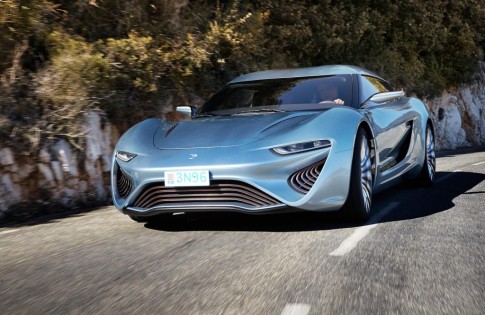
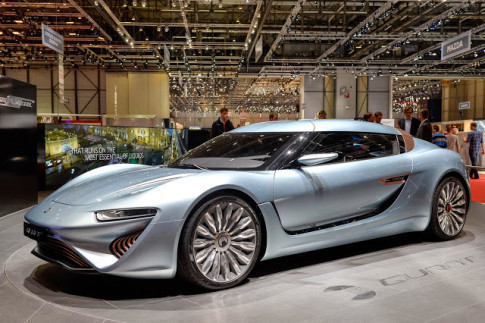

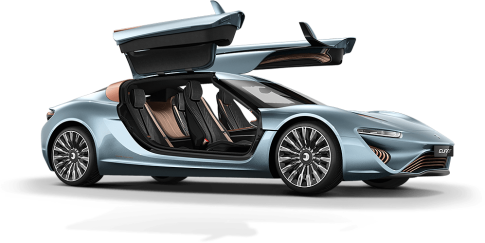
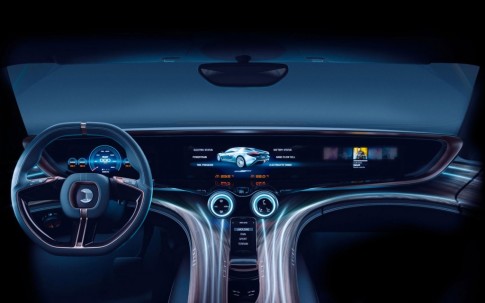
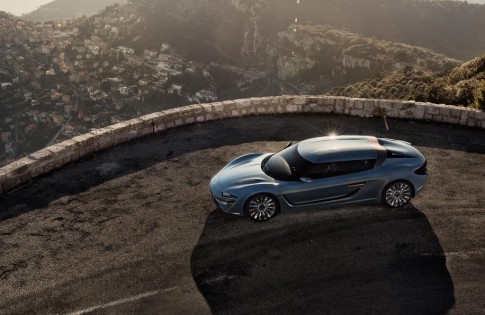
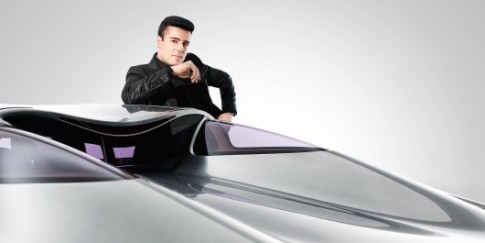

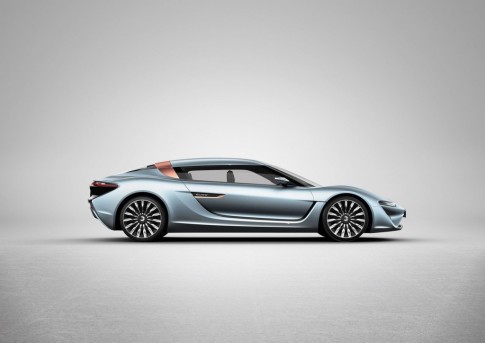
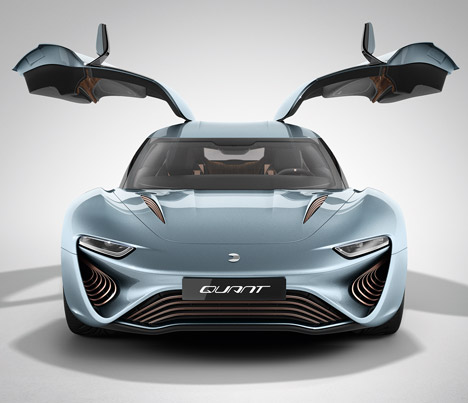
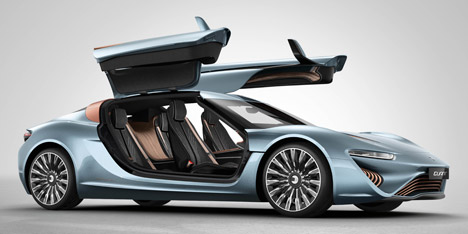
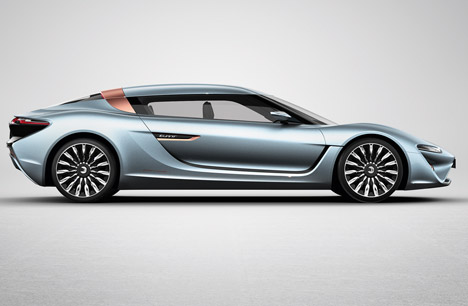
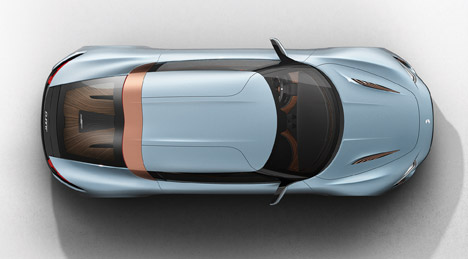
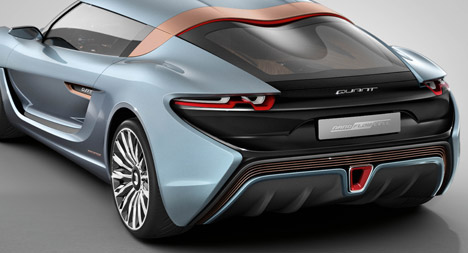
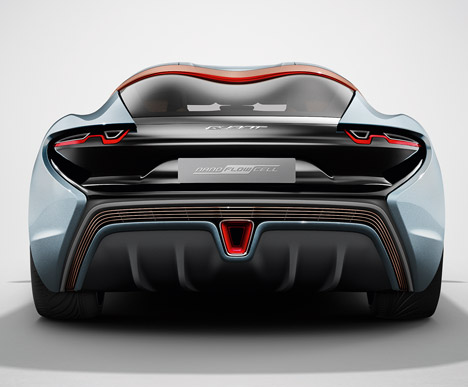
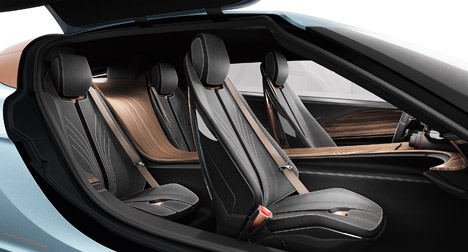
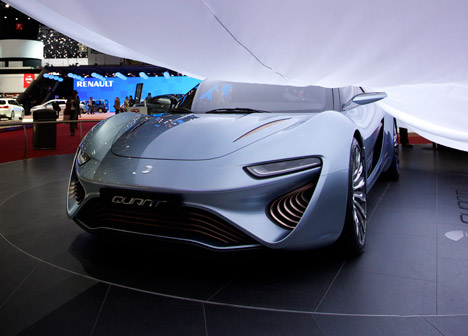
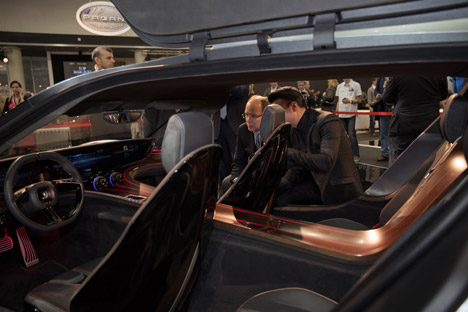
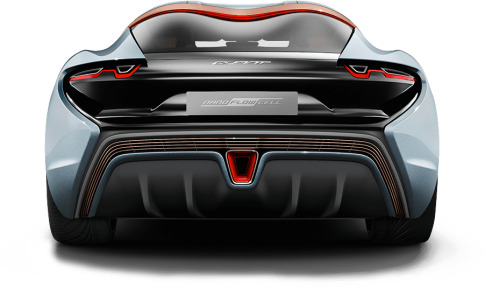
Fuel cell technology has been in existence since 2000, but finding an economic way to use it has been a huge roadblock. I am delighted (but not surprised) the Germans have found a feasable way to run cars using the technology. This is great news! And, what a beautiful motor car!
I’d like to see it available ASAP!
I have been following this redox flow cell battery technology for a long time now, as it’s a way to store large amounts of energy generated by solar panels for example and a way to quickly refuel the battery. The Quant company supposedly adds the ‘nanotechnology’ now to create nano-wires which should boost the energy holding capacity of the electrolyte, which is necessary because flow cell batteries normally store significantly less energy per unit of volume than li-on batteries for example. However, this article and the presentation of this car has several symptoms of a hoax/scam and the plebs loves this kind of hoaxes. The word ‘seawater’ (instead of metal ions dissolved in a liquid) is one of the symptoms as are the styling of the presenter, the ‘space age’ looks of the car and the facts that no patents have been filed so far and the company is based in tax paradise Liechtenstein. Critical evaluation is needed. E.g.: The Supercar That Runs Using ‘Saltwater’ Is Likely Bullshit ( http://jalopnik.com/the-supercar-that-runs-using-saltwater-is-likely-bullsh-1637600538 ), Quantum-Nano Nonsense Leaves Saltwater Powered Car Running on Empty (http://visiblefriends.net/getreal/2014/09/quantum-nano-nonsense-leaves-saltwater-powered-car-running-on-empty/ ). Some history of the redox flow battery from wikipedia: ‘The vanadium redox (and redox flow) battery is a type of rechargeable flow battery that employs vanadium ions in different oxidation states to store chemical potential energy. The present form (with sulfuric acid electrolytes) was patented by the University of New South Wales in Australia in 1986.[2] An earlier German Patent on a titanium chloride flow battery was registered and granted in July 1954 to Dr. Walter Kangro, but most of the development of flow batteries was carried out by NASA researchers in the 1970s. However, Pissoort, Pellegri and Spaziante commenced the first known successful demonstration and commercial development of the all-vanadium redox flow battery employing vanadium in a solution of sulfuric acid in each half was by Maria Skyllas-Kazacos and co-workers at the University of New South Wales in the 1980s.’
Thank you Lana!!!
https://youtu.be/RqLpqR0SPnQ
I guess seeing is not believing for some folks???
Update
https://www.topspeed.com/cars/others/2018-quant-48volt-ar175785.html
Here it is again.
http://www.collective-evolution.com/2018/05/05/this-car-is-powered-by-salt-water-920hp-top-speed-217-5-mph-373-milestank/